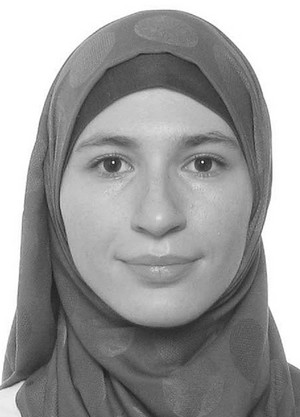Effect of genotypes of representatives of certain ethnic groups on ability to engage in different types for physical activity
Фотографии:
ˑ:
Teoriya i praktika fizicheskoy kultury №11 2016, pp. 98-100
UDC 796.01:612
PhD student of the Department of Biology and General Genetics A. Ait Aissa1
Dr.Biol., Associate Professor, Head of the Department of Biology and General Genetics M.M. Azova1
PhD, Associate Professor of the Department of Biology and General Genetics O.O. Gigani1
PhD, Associate Professor of the Department of Biology and General Genetics O.B. Gigani1
Dr.Med., Professor of the Department of General Pathology and Pathophysiology M.L. Blagonravov1
PhD, Director of the Diagnostic research department A.S. Karamyan2
PhD, chief physician A.M. Khodorovich3
1Peoples' Friendship University of Russia (PFUR), Moscow
2Shared Research and Education Center of the Peoples' Friendship University of Russia (PFUR), Moscow
3Moscow city polyclinic No. 25, Moscow
e-mail: azovam@mail.ru
There was investigated the distribution of I/D ACE polymorphism, which predisposes to sports activity among the Arab populations of Algeria and Syria, as well as in Russians from Central Russia. The ACE genotypes were established using polymerase chain reaction (PCR) for 55 healthy Algerians with the mean age of 33.4±11.6 years, 40 Syrians (25.5±7.9 years) and 59 Russians (20.5±6.8 years). A significant difference was found in the ACE genotype distribution between Russians and Algerians (Х2 = 40.52; Р=0.00019), and between Russians and Syrians (Х2 = 19.57; Р =0.038). The results show the I/D ACE polymorphism among Arabs and Russians should be considered in the identification of the genetic potential of physical qualities to select the optimal physical activity and develop a personalized approach to training in order to achieve best athletic performance. The research was conducted at the Department of Biology and General Genetics, Medical Institute of Peoples' Friendship University of Russia.
Keywords: angiotensin-converting enzyme, population, personalized training.
References
- Amir O., Amir R., Yamin C., Attias E., Eynon N., Sagiv M., Sagiv M., Meckel Y. The ACE deletion allele is associated with Israeli elite endurance athletes. Exp Physiol. 2007; 92:881-886.
- Ash G.I., Scott R.A., Deason M., Dawson T.A., Wolde B., Bekele Z., Teka S., Pitsiladis Y.P. No association between ACE gene variation and endurance athlete status in Ethiopians. Med. Sci. Sports Exerc. 2011;(43):590-597.
- Comas D., Calafell F., Benchemsi N., Helal A., Lefranc G., Stoneking M., Batzer M.A., Bertranpetit J., Sajantila A. Alu insertion polymorphisms in NW Africa and the Iberian Peninsula: evidence for a strong genetic boundary through the Gibraltar Straits. Hum Genet 2000, 107:312-319
- Houcher B., Begag I.S., Houcher1 Z., Karabiyik A., Egin Y., Akar N. Prevalence of genetic polymorphisms of methylenetetrahydrofolate reductase C677T and angiotensin I-converting enzyme (insertion/deletion) in Setif population, Algeria. MBRC 2013; 2(1-2):19-27
- Lucia A., Gomez-Gallego F., Chicharro J.L., Hoyos J., Celaya K., Cordova A., Villa G., Alonso J.M., Barriopedro M., Perez M., Earnest C.P. Is there an association between ACE and CKMM polymorphisms and cycling performance status during 3-week races? Int J Sports Med. 2005; 26(6):442-7.
- Montgomery H.E., Marshall R., Hemingway H., Myerson S., Clarkson P., Dollery C., Hayward M., Holliman D.E., Jubb M., World M., Thomas E.L., Brynes A.E., Saeed N., Barnard M.,Bell J.D., Prasad K., Rayson M., Talmud P.J., Humphries S.E. Human gene for physical performance. Nature 1998; 393:221-222.
- R Core Team.2015. R: A language and environment for statistical computing. R Foundation for Statistical Computing, Vienna, Austria. Available at: http://www.R-project.org/.
- Sakuma T.; Hirata R. D. and Hirata M. H. Five polymorphisms in gene candidates for cardiovascular disease in Afro-Brazilian individuals. J. Clin. Lab. Anal, 2004;18: pp. 309–316.
- Salem A. and A. Batzer. High frequency of the D allele of the angiotensin-converting enzyme gene in Arabic populations. BMC Research Notes, 2009, 2:99.
- They-They T.P., Hamzi K., Moutawafik M.T., Bellayou H., El Messal M., Nadifi S. Prevalence of angiotensin-converting enzyme, methylenetetrahydrofolate reductase, Factor V Leiden, prothrombin and apolipoprotein E gene polymorphisms in Morocco. Ann Hum Biol. 2010; 37(6):767-77.
- Ulu A., Elsobky E., Elsayed M., et al. Frequency of five thrombophilic polymorphisms in the Egyptian population. Turk J Hematol 2006; 23: 100–103.
- Wang P., Fedoruk M.N., Rupert J.L. Keeping pace with ACE: are ACE inhibitors and angiotensin II type 1 receptor antagonists potential doping agents? Sports Med, 2008;38:1065-1079.
- Znazen H., Touhami I., Chtara M., Le Gallais D., Ahmetov I.I., Chamari K., Soussi N. Genetic advantageous predisposition of angiotensin converting enzyme id polymorphism in tunisian athletes. Sports Med Phys Fitness, 2015, May 6.
Received 06.06.2016 г.



 Журнал "THEORY AND PRACTICE
Журнал "THEORY AND PRACTICE